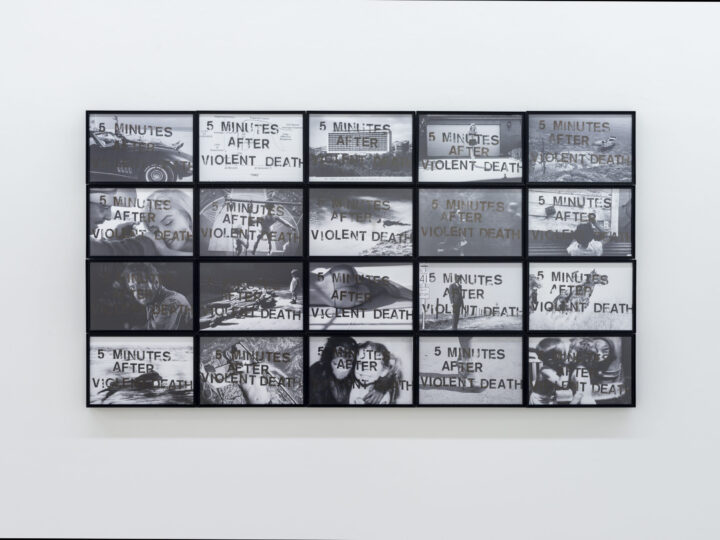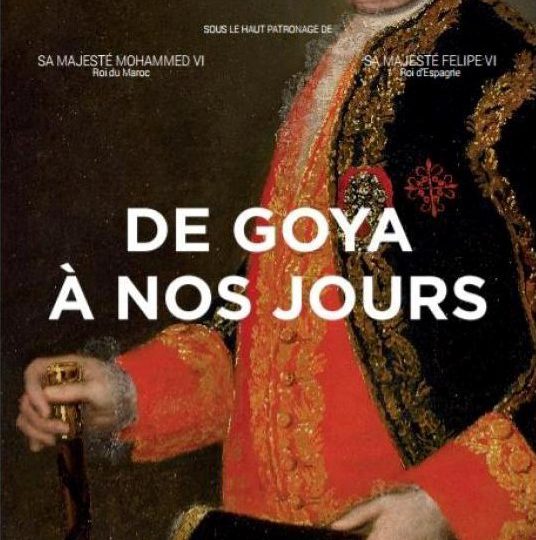JOÃO LOURO
08.05.06|30.06.06
LA NUOVA PESA, CENTRO PER L’ARTE CONTEMPORANEA, Rome, Italy
by Simona Cresci
The whole function of language lies in having meaning: language absolves this function only to the extent to which it comes close, in itself, to the ideal language that we have postulated. (Ludwig Wittgenstein)
Images and their over-exposure are the defining basis of João Louro’s work: bearing in mind the contemporary reality, Louro realises monochrome pieces with which he seeks to escape from such viasual intoxication, salvaged from the writings that he inserts into his paintings.
The artist’s personal memory becomes the essetia material for the construction of works of art in which we encounter his daily existence.
On the occasion of the exhibition at La Nuova Pesa, the Portuguese artist (previously invited, together with Vasco Araújo, to the Italian Pavilion at the 51st Venice Biennale) presents works realised specifically for the Roman show, in which large and medium-sized aluminium paintings with references to the facts of the history of art, current affairs and the cinema, are introduced by the word “Diablo” written in neon, this introducing the fine dividing-line between a concept, its visual image ande its verbal definition.
The works present themselves as monochromes with, at the foot of each, writing relative to advertising, magazines or newspapers, words describing historical, political, social or artistic events, phrases from famous films or spectacular invented facts, mixed in with the truth. The word assumes a fundamental role.
Through pieces large and medium scale – the force conferred by their dimensions sufficient to overwhelm the viewer – Louro describes events and facts with a notable irony: they are situations activated by the artist and as such are rendered pregnant and significant.
In the majority of João Louro’s works, realised with a mirror effect, the viewer is reflected in the neutral, monochrome part of the piece, dedicated to the imaginary visualisation deriving from the words. So his installation become vehicles of his specific intention to offer for the viewer’s contemplation forms that are the personal fruit of a creative process.
But it is also true that the neutral image, instead of reflecting the narrated story, reflects the viewer who finds himself within the image, becoming an integral part of it. So, does the image referring to the words really exist?
And it is here that we encounter the deception, the paradox and the irony, because the association of the written word and the image seen reflected can chage dramatically in its significance, so much so as to construct a wide field of possibilities, an elastic zone of multiple potential directions.
This because the position of the viewer is never rigid: the image rarely forces him into a fixed spot.
Again it is the viewer who establishes a reflexive relationship with the work: the scene before him reveals itself a mirror, consigning him the image of his own activity.
In front of João Louro’s works we become promoters of an interpretative activity with respect to what is observed. As a consequence we are ascribed a narrative role within the world of the text.
The subject perceives, or, that is, organises at an initial cognitive level the visual data, and based on this perception, demonstrates consciousness of the degree to which he understands and react passionately to what he sees and knows.
Louro’s material, therefore, is language, and through an interesting system of metaphors he recounts something of the world.
João Louro’s work can be identified, simultaneously, both as a part of the scorning or the derision of the image and the weight of the world, or as a part of the intoxication of language and its recovery as form.
Categories:Exhibitions, Past
![But What About the Noise of Crumpling Paper [solo show]](https://joaolouro.com/wp-content/uploads/2018/05/partitura-john-cage-01-720x540.jpg)


![RUNAWAY CAR CRASHED #2 [solo show]](https://joaolouro.com/wp-content/uploads/2000/06/IMG_2191-720x540.jpg)